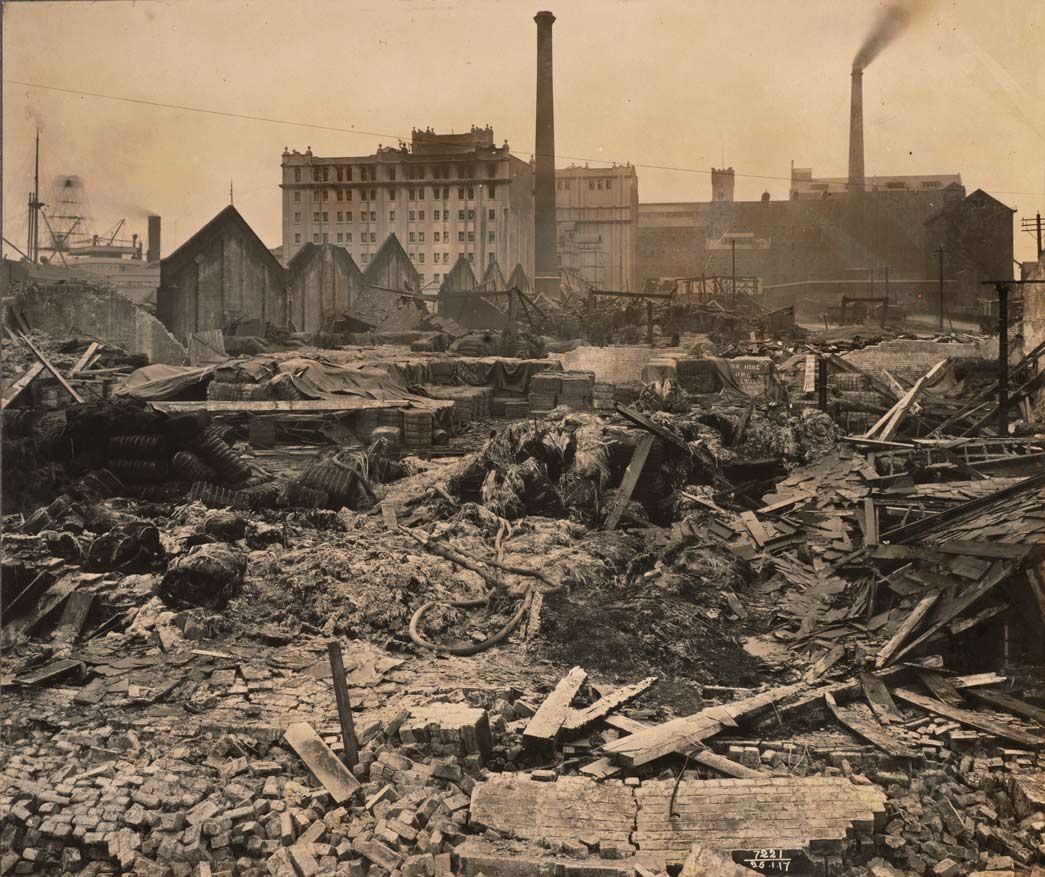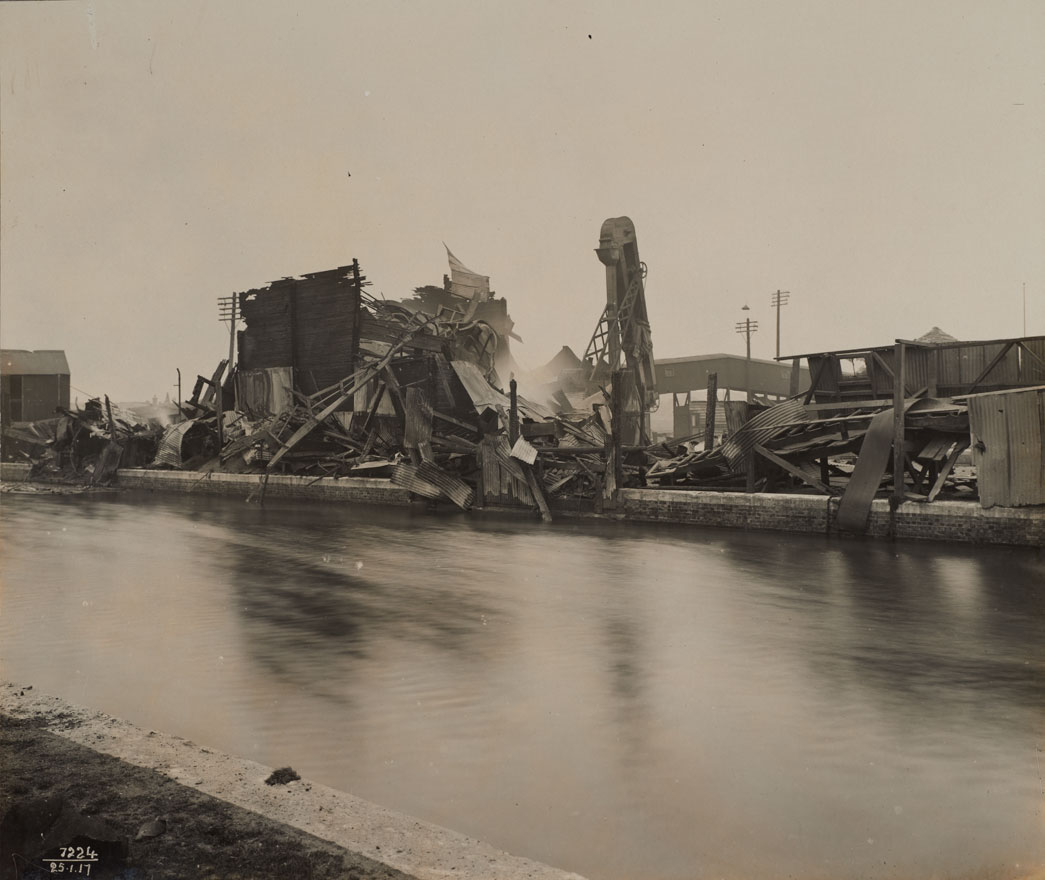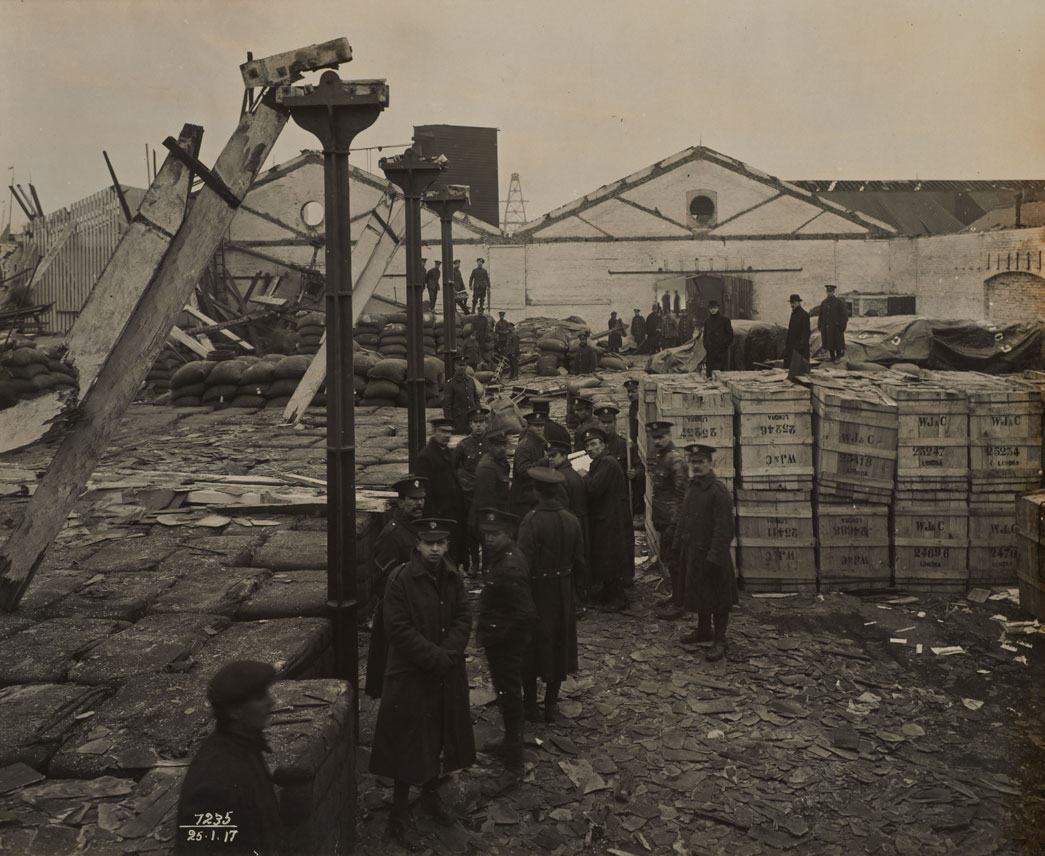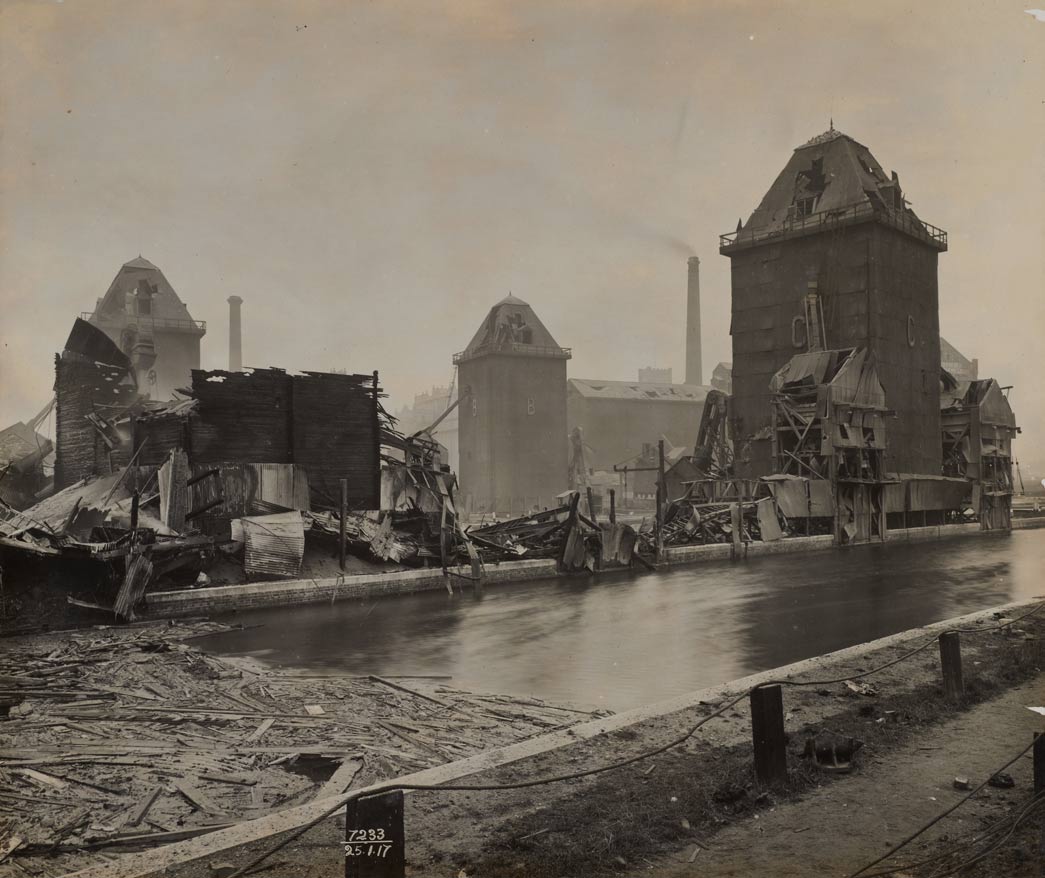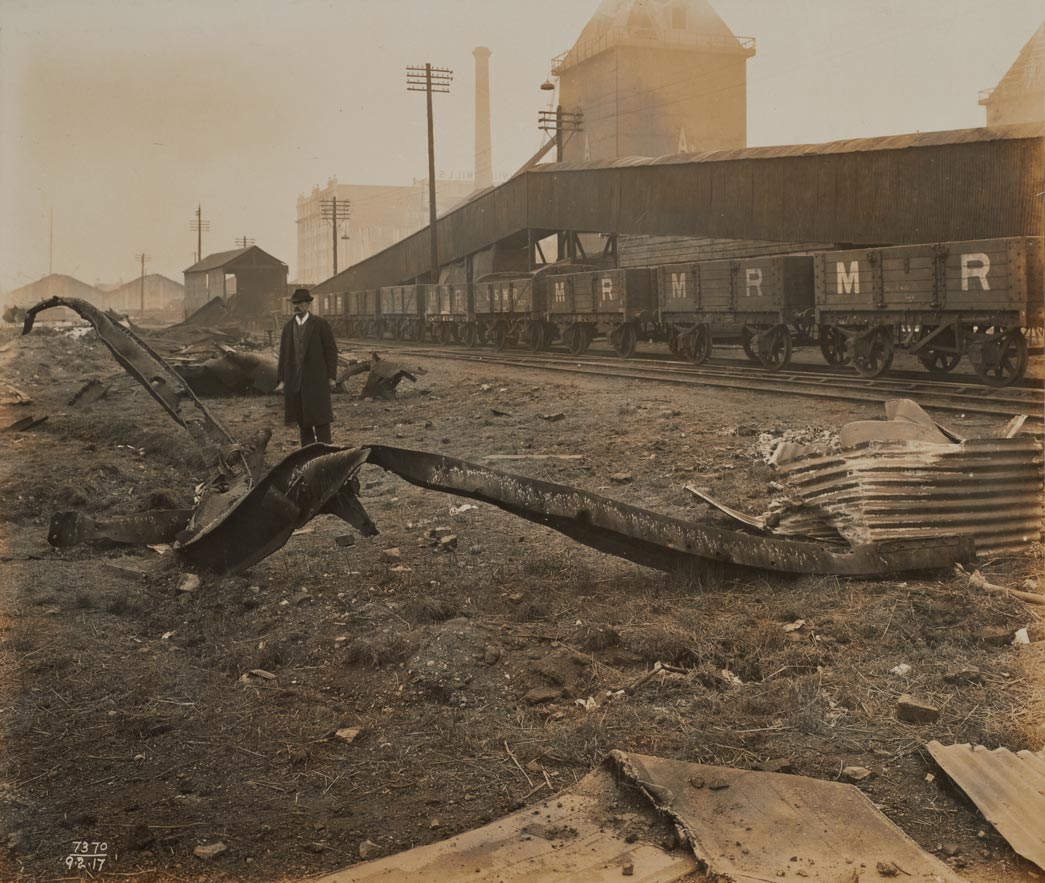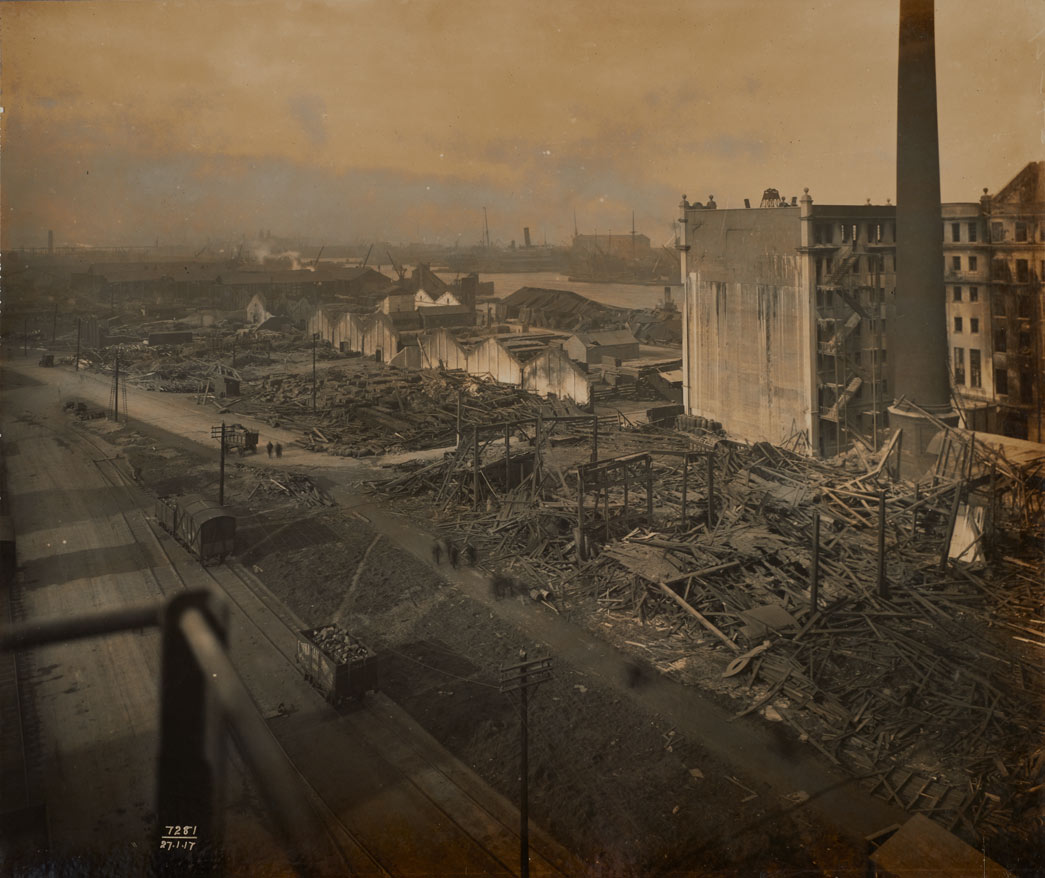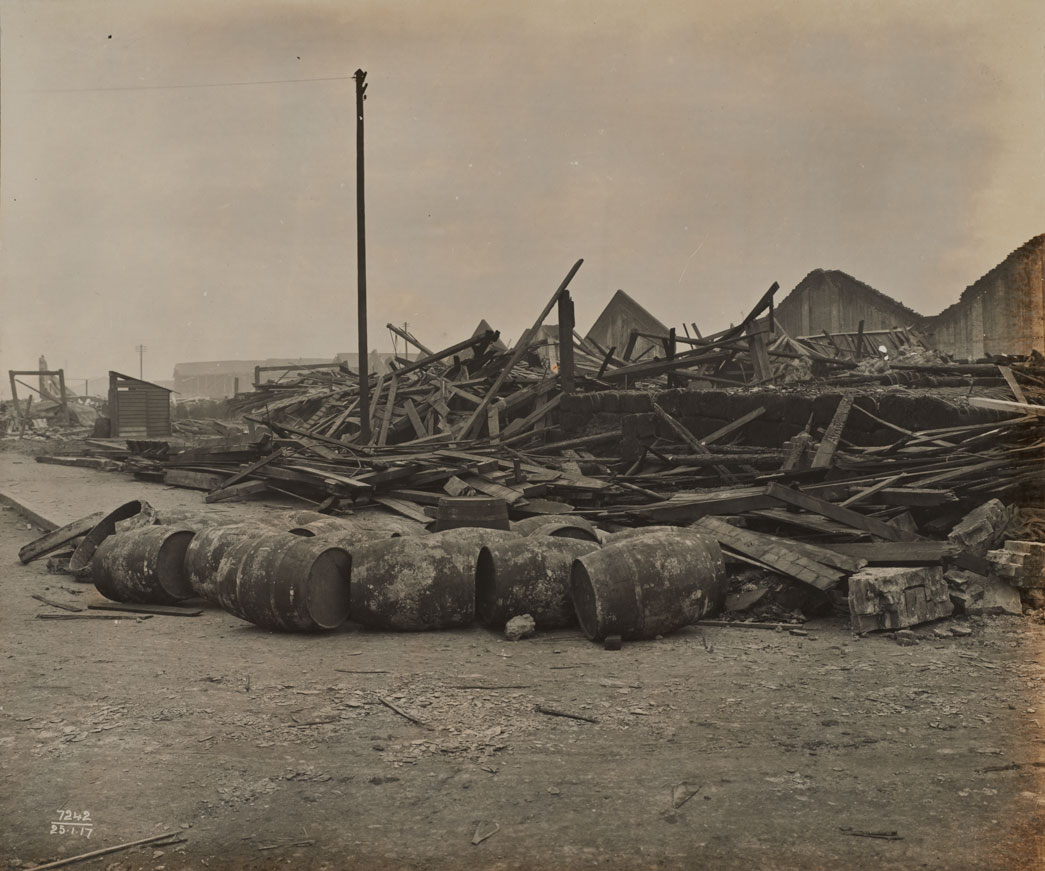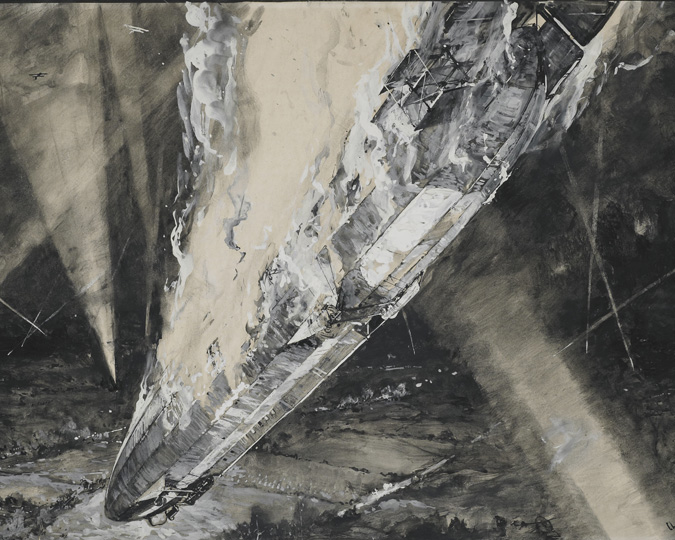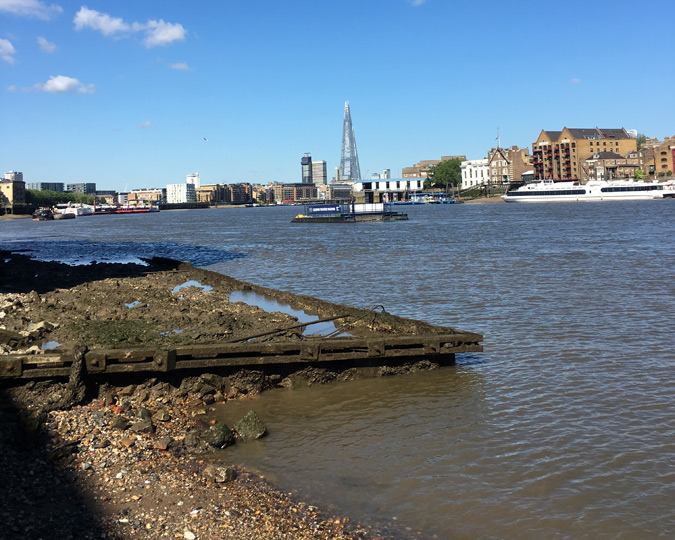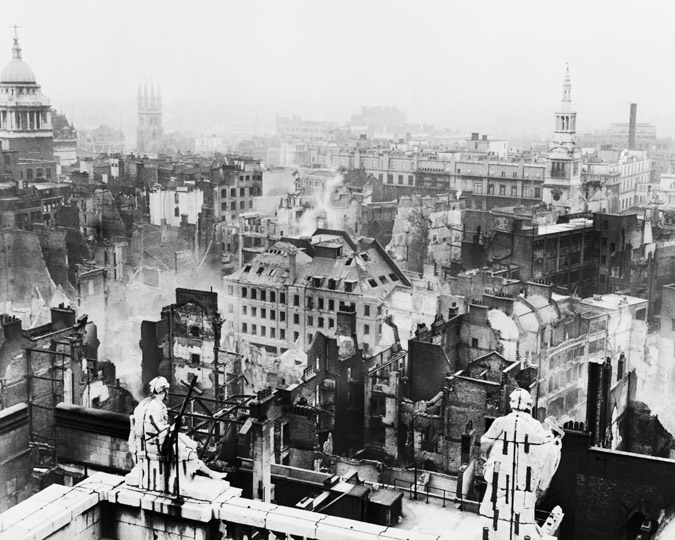One hundred years ago, London was rocked by the largest explosion in its history. On 19 January 1917, a munitions factory exploded at Silvertown, in London's docklands. Watch our video explaining what happened, and read on to see newly digitised photos revealing the terrible scale of the Silvertown disaster.
At 6.52pm on Friday 19 January, 1917, a massive explosion tore through Brunner Mond & Co munitions factory in Silvertown, East London. Fifty tonnes of TNT exploded, in what remains London’s largest ever explosion. 900 local homes were flattened, and 60,000 buildings damaged throughout the city. Burning debris scattered for miles, causing numerous fires, including a gas cylinder in North Greenwich to explode. The fires could be seen as far away as Guildford, whilst shockwaves from the explosion were reported in Norfolk and Southampton. The explosion was a humanitarian disaster, with 73 killed – including many children - and over 400 injured.
The Port of London Authority (PLA) ran London’s docks,
including the Royal Victoria Dock right next to the Brunner Mond factory. This
dock specialised in the import, storage and processing of grain, and the silos
and warehouses of the flourmills were amongst the 17 acres of PLA land damaged.
In the aftermath of the explosion, the PLA commissioned photographer John H Avery to make a detailed photographic record to assist in dealing with claims for compensation. The resulting album, held at the Museum of London Docklands, contains 24 photographs of Royal Victoria Dock only a few days after the explosion. Public and press access to both Silvertown and the docks was limited at the time, and these images provide a unique view of the scale of devastation from the Silvertown explosion. Despite the freezing weather and damaged terrain, Avery used his signature bulky wooden field camera to produce well composed and incredibly detailed images. Together they make an extraordinary group of beautiful photographs which eclipse the business purpose for which they were taken. These photographs have now been digitised and, for the first time in 100 years, are available for anyone to view, in our Collections Online section.
This photograph shows D silo, a storage unit that was completely destroyed by the fire. When Avery took this photograph on 25 January, 6 days after the Silvertown explosion, the wreckage was still burning - you can see the over-exposed area in the centre of the photograph. Despite having had well over 100 firefighters in attendance, the PLA Chief Police Officer reported on 8th Februrary that D silo was "still burning".
The Chairman of the Dock Committee reported on the 29th January "that a number of soldiers had been brought into the Dock area and were engaged in removing debris and covering up the goods". This image captures a number of these soldiers as they go about their work. Reading through the PLA records in preparation for the centenary commemorations, I learnt much about each of the Avery images, but also the victims of the Silvertown explosion.
The reports of the Chief Police Officer were extremely revealing, detailing the names of those killed or injured on PLA land, including PLA staff. These devastated grain silos give a sense of the scale of the destruction. The Bulk Grain Department of the PLA was amongst the hardest hit, as four of those killed and 19 of those injured came from this department.
The sense of chaos in the aftermath became clear – the original toll of seven PLA staff was quoted, but only six were named in the committee reports. Henry Picton, a 46 year old labourer in the Bulk Grain Department, listed as having died in Poplar Hospital, in fact recovered. The sheer size of the PLA site, the destruction of some staff records, and the fact that the wounded were taken to a number of hospitals and first aid stations across East London made it difficult to keep track of the casualties. Sadly the confusion meant the family of one PLA employee had to wait days before discovering his death:
"The body of Thomas Crickmar (67), employed the Port of London Authority, was identified by his married daughter, Theresa [Thirza] Gilham, who said he worked on a floating vessel, and was not expected to be home till Saturday. He did not come, and enquiries were made on Sunday, when it was found he was dead in hospital. Dr. Dora Coleborough, London Hospital, said there was a small piece of iron in an abdominal wound, his skull was fractured, and the track of a piece of projectile was found."
(Taken from the Birmingham Daily Post, Tuesday 23 January 1917.)
Henry George Ledbury, Cashier, was killed outright in the
Bulk Grain office and the remains of his assistant, Harold Forster, 21, fourth
class clerk were recovered on the morning of the 20th January from the ruins of
the shed in which he had taken refuge.
The rather wonderful Lives of the First World War website gave poignant information about another victim:
“John Royal Howard was wounded at Ypres on July 6, 1915, just a few months after he'd arrived on the Western Front. In May 1916, the Medical Board reported: "He states he was in charge when struck by shell in right and left legs and back. He was removed to Etaples and thence to Royal Infirmary Derby where he remained four months. He was then taken to 5th Northern General Hospital Leicester." Deemed permanently unfit for service and "incapable of marching," the Board also stated that: "He has two scars in his back cervical and dorsal regions, one on the left leg the whole length of his calf and three on his right leg and foot. His right foot is turned in and partly paralysed. He walks on the outside of his foot with the help of a stick. He can only walk for short distances."
Given his injuries, I was surprised to see Howard listed as either a labourer or machinery attendant from the Bulk Grain Department. His disabilities would have no doubt impeded his escape. There are many sad stories of those killed by the Silvertown explosion on the Lives of the First World War site –the youngest victim, a 4 month old daughter of one of the firefighters injured trying to put out the fire at the Brunner Mond factory that caused the explosion; the mother who fainted giving evidence at the inquest, having lost her husband and only child, an 18 month old when the house collapsed around them ; the brother and sister sent out to play and only the sister came back, ‘black as coal’.
Also captured within the PLA records are accounts of the bravery of PLA staff and other dock workers, reported by managers in the hope that the deserving would receive a financial reward. Vernon Charles Roberts, a boatman in the Southern division, rescued 28 year old mill hand Miss Kramer from the debris of No. 11 shed, and used his boat to convey her across the dock for first aid. Staff of the tugs Power, Holland, Scott, Canada, Lea and Hornet are credited with saving Ranks Mills and C silo from destruction through their quick action to fight the fire, and with ferrying the injured to hospital.
The PLA records also suggest how quickly the dock was up and running, despite the widespread devastation which is well detailed. Within days temporary arrangements were in place for other docks to receive and transport grain and other goods – these supplies were essential to Britain, especially during wartime. The quick, if partial, recovery of the dock becomes less surprising when you read the reward records - sick pay appears as a request rather than an automatic right, suggesting dock workers could not afford to take unpaid time off, even if they were ‘badly cut’ or otherwise injured. It was not however until the early 1920s that all of the repair or replacement works to the dock buildings were completed.
In the archives are meticulous accounts costing the exact
expense of the disaster to the PLA, prepared by the city surveyors G Corderoy
& Co. The PLA became the largest single claimant against the government for
damage and losses incurred as a result of the Silvertown explosion, asking for
£357,540. Alongside the accounts are anxious
memos about the need to compromise with the government, who after the first payment
of £100,000 queried the high claim.
Even after 100 years, with the help of sources such as the Port of London Authority archive we are still discovering more about the human and financial cost of the Silvertown explosion.
Love photography? Subscribe to our photography newsletter to read more stories from our collections, and see upcoming events and exhibitions.








